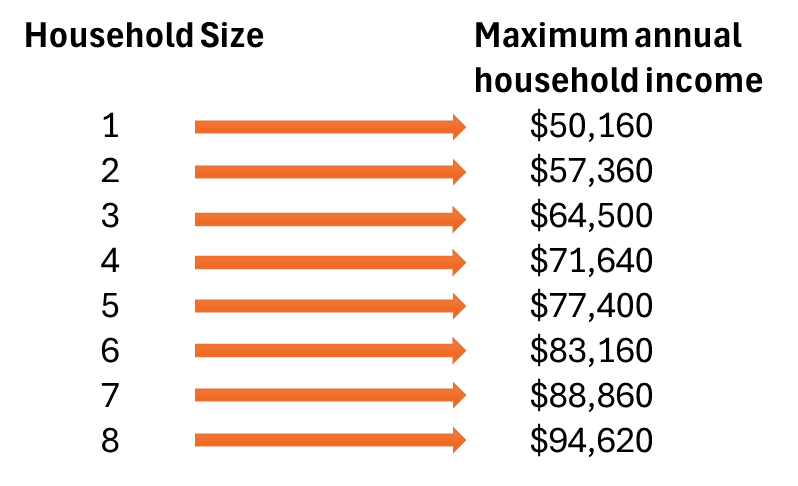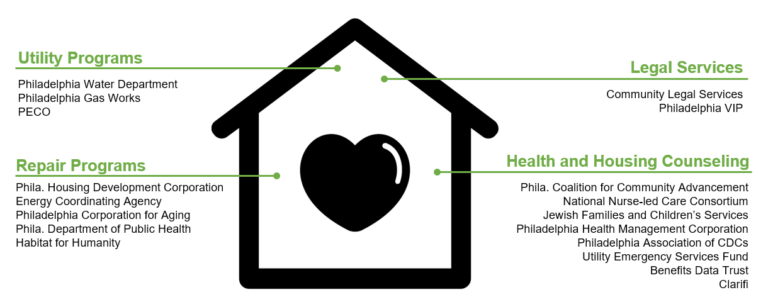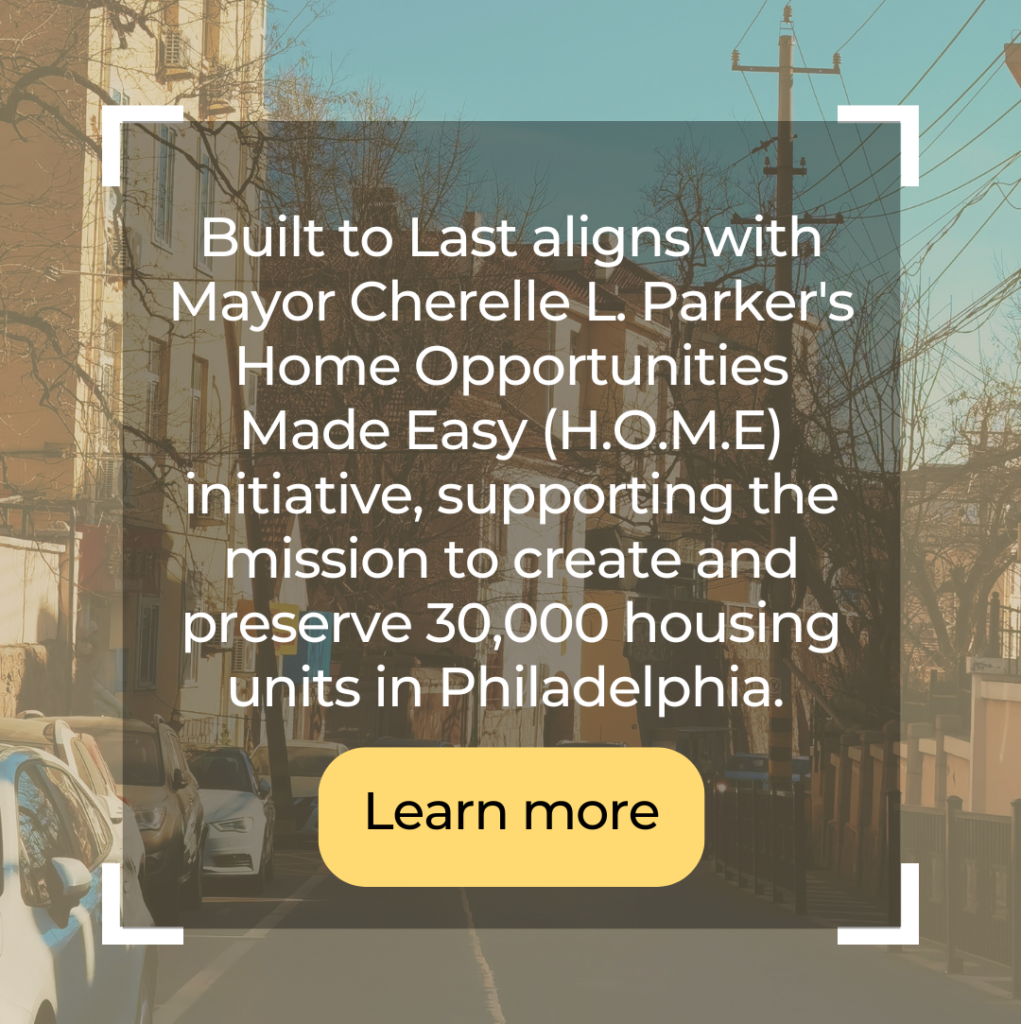
Built to Last
Philadelphia has an abundant supply of affordable housing compared to our peer cities. But high poverty rates, rising maintenance and utility costs, and an aging housing stock make ownership increasingly difficult to sustain.
Philadelphia’s government agencies, utilities, and non-profit service providers offer various housing repair and energy affordability programs. Often, however, those facing the greatest challenges are deemed ineligible for services.
Among the nation’s 10 most populous cities, Philadelphia has the highest
proportion of cost-burdened, low-income households.
Built to Last coordinates and supplements existing programs, simplifying the process for low-income homeowners to navigate complex systems. In doing so, Built to Last ensures a whole-home approach to housing preservation, combining health, safety, and energy efficiency improvements.
The PEA-led program aggregates available funding to fill project gaps and sequences improvements. Our approach overcomes barriers to program eligibility, prevents housing displacement, and addresses unhealthy housing conditions. Where possible, Built to Last prioritizes high-efficiency upgrades and low-cost renewable energy. We are a proud ENERGY STAR Home Upgrade partner.
Are you a homeowner? Find out if Built to Last can help
Participate in Built to Last
Eligibility
To participate in Built to Last, you must:
- Own and occupy your home. This home is the only property you own.
- Meet the Income Guidelines listed below:

- Be current on your property taxes and water bill or be in a payment agreement with the city.
- Plan to remain in your home for at least three years after repairs are completed.
Process
Due to high demand, there is currently a multi-year wait to receive services through Built to Last. PEA is seeking additional funding to continue expanding Built to Last to serve more Philadelphians and reduce the wait time.
1. Intake
Applicants will be contacted by intake staff to collect documentation needed to meet program eligibility requirements. Documentation includes:
Proof of income, recent utility bills, ID, proof of homeownership, proof of property tax payment or payment arrangement, relevant release forms and affidavits
2. Home Assessment
After completing the process to meet eligibility requirements, a home assessment will be conducted. The assessment will determine the home’s condition by inspecting:
- The home’s structural integrity
- Mechanical, electrical and plumbing systems
- Kitchens and bathrooms
- Roofs
- Heating, ventilation and air conditioning
3. Customized Project Plan
The assessment and repair teams prioritize improvements to critical health and safety issues that also address the home’s livability. Energy efficiency, improvements lower electrical and heating costs, enhancing overall comfort, improving indoor air quality, and reducing environmental impacts.
All records and information collected as part of Built to Last will be shared with program partners in order to deliver coordinated home improvement services.
4. Partner Coordination
Built to Last coordinates with partners to deliver the full range of services that the household qualifies for. All records and information collected as part of Built to Last will be shared with program partners in order to deliver these coordinated home improvement services.
Complete the Built to Last Interest Form
The Built to Last Program
The Philadelphia Energy Authority (PEA), with the leadership of Councilmember Derek Green and a core group of coalition partners and advocates, is rethinking how Philadelphia can improve housing for low-income homeowners.
PEA is acting as an administrative backbone to allow housing programs to layer and streamline their services, and will add construction management services, additional grants and financing as needed. Built to Last seeks to restore the safety, health, affordability and comfort of existing affordable housing in a way that improves the long-term quality of Philadelphia’s housing, builds community wealth, and helps families avoid displacement and stay in their homes.
PEA began its first pilot in late 2021 to serve its first 50 homes and began its second phase of 50 homes in early 2023.
For each phase, PEA will work with low-income homeowners who are living in neighborhoods with high poverty rates across the City of Philadelphia. PEA will assist the households with enrolling in all available benefits, evaluate their home restoration needs, and coordinate service delivery and supplemental funding.
Read the full Built to Last overview.

